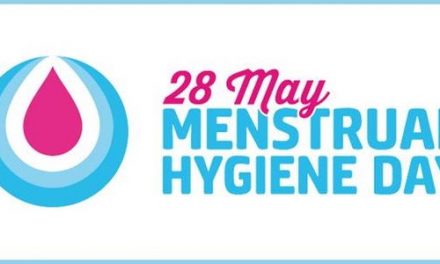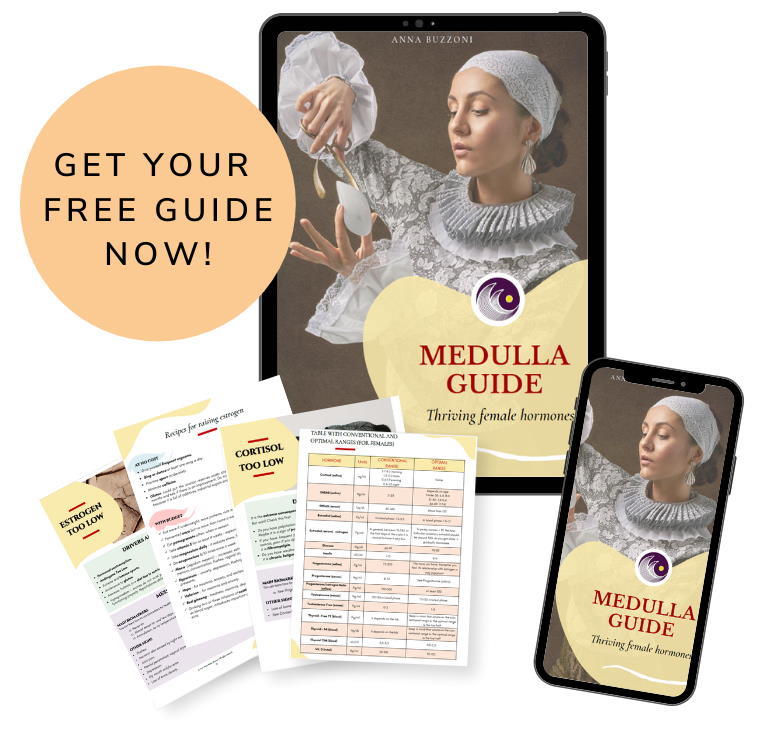Progesterone is essential for a healthy and trouble-free cycle. But perhaps you don’t know that it is also essential for the health of the brain, the immune system, detoxification, quality of sleep, and the health of the bones and cardiovascular system, to name but a few. Progesterone calms us, feeds us, protects us and strengthens us, but many women lack it. In this post we see its benefits, how to measure it, the symptoms of its deficiency, and some tips to correct it.
The benefits of progesterone
- It improves sleep quality and improves mood thanks to its metabolite ALLO, which interacts directly with the brain, promotes deep sleep and is essential to eliminate premenstrual insomnia.
- Relaxes nerves and muscles, reducing anxiety and muscle tension.
- It decreases menstrual flow and contractions, because it balances the action of estrogen, reducing the thickness of the endometrial wall, and consequently also the contractions needed to eliminate it.
- It stimulates metabolism and gives a burst of energy because it stimulates the thyroid gland and raises body temperature and heartbeats. It also stabilizes communication between the hypothalamus and the adrenals by relieving symptoms of adrenal dysfunction (also called adrenal fatigue).
- It improves skin and hair health because it counteracts androgen hormones, which cause acne and oily hair.
- Reduces water retention stimulated by estrogen, acting as a mild diuretic.
- It prevents autoimmune diseases because it modulates the immune response, reduces inflammation and detoxifies the body.
- It protects the bones from osteoporosis and promotes muscle formation.
- It protects against cancer, especially breast cancer.
- It protects the heart and the entire cardiovascular system.
- It stimulates intuition and wisdom, and the right hemisphere.
Progesterone deficiency – biomarkers
- Luteal phase is too short (must be at least 12 days long – if you use the symptothermal method, 10 days of high temperatures are enough).
- Temperature too low during the luteal phase (must rise by at least 0.2 Celsius for at least 10 consecutive days).
- Transparent and elastic mucus during the luteal phase.
- Premenstrual spotting for over three days.
Symptoms and conditions related to progesterone deficiency
- Heavy periods
- Fibromes
- Acne
- Hair loss
- Premenstrual distress
- Premenstrual migraines
- Osteoporosis
- Swollen and painful breasts
- Premenstrual water retention
- Autoimmune diseases
- Insomnia
- Polycystic ovarian syndrome
- Endometriosis
What you can do to get more progesterone
The two pillars are: produce enough progesterone and avoid losing it.
Progesterone is only produced when ovulation occurs, so it is important to support ovulation by eating all the essential nutrients present in real, fresh, non-industrial food that contains enough fat, protein and carbohydrates. Diets without or poor in one of these groups are detrimental to cycle health. A truly healthy diet is varied, seasonal, rich in fiber and as free as possible from sugars, hormones and pesticides.
- Particularly important are magnesium, zinc, selenium, copper, iodine, vitamin D and B vitamins.
- It is necessary to identify and resolve states of inflammation such as gluten and lactose sensitivity, intestinal permeability (leaky gut), thyroid dysfunction and insulin resistance.
- Stress is a very important factor, in fact, the production of stress hormones (cortisol) inhibits the production and reception of progesterone. Stress awareness is the first step towards a gradual management and reduction of stress. To reduce the amount of cortisol there are several extremely effective techniques, including conscious breathing, walking in nature, practicing yoga, playing, singing, dancing, putting your legs up, sleeping, meditation and mindfulness. Alcohol and coffee greatly increase cortisol production.
A follicle takes about three months to become a corpus luteum, the gland that secretes progesterone, and it is therefore important to sustain its journey with care.
It’s no coincidence that many women have symptoms of low progesterone. Our western lifestyle makes us eat food that is not nutritious and harmful (here one example among a thousand, specifically, how pesticides cause infertility), exposes us to a lot of artificial light (which raises cortisol) and little natural light (which makes us produce vit. D) and convinced us that those who sleep are losers.
This belief is not only false, and neuroscience is fortunately proving it, but it causes emotional, mental and physical disorders and does not allow us to live free, as nature made us. Sleep, sleep and rest more! By the way, it is proven to stimulate healing, creativity and professional success.
P.S. No synthetic contraceptive contains progesterone. Progestins ARE NOT progesterone. They are different molecules and behave differently.
Bibliography
Briden L., 2017, The Period Repair Manual
Northrup C., 2010, Women’s body women’s wisdom, Bantam Books, New York







